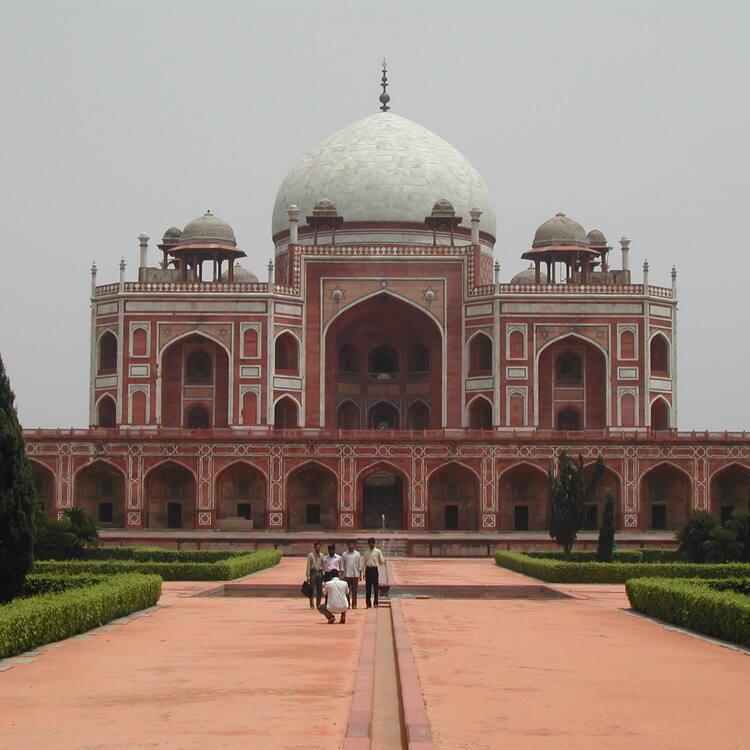by Aditi Jain and Aneeq Ejaz
The unparalleled grandeur and magnificence of Mughal mausoleums, the most famous of which is the Taj Mahal, have drawn attention from academics and the public alike. Scholars, however, have puzzled over how to classify these structures. In a recent lecture titled ‘In Praise of God, Sun and King: The Enigmatic Inscriptions on Mughal Imperial Mausolea’, Dr. Azfar Moin, Associate Professor and Chair at the Department of Religious Studies, offered a new interpretation by interweaving material constructions of these mausolea with the political ideology of the Mughal dynasty as it is rendered in the extensive inscriptions on these imperial structures. The lecture was organized by the South Asia Institute as part of its Spring 2023 Seminar Series.
From a historical perspective, Moin highlighted the fact that the Mughals followed the Chinggisid legacy of equating the king’s status as a sovereign of this world with that of God as the emperor of the cosmos. Furthermore, the Mughals inherited the Mongol and Timurid imperial culture in which the saints were treated as royal companions in life and death. As a result, the king’s body began to be treated in the same manner as that of a saint. In the fourteenth century, Timur had constructed some of the largest Sufi shrines ever built and his own tomb became a site of saintly pilgrimage.
Moin also applied the anthropological insight that all monarchs who inherited their royal status faced the problem of “sinking status” as their distance from the heroic founder grew over time, and all of them dealt with this issue by “managing the royal dead.” For Mughal imperial tombs, argues Moin, we must ask whether these buildings elevated or brought down the status of the reigning monarch relative to his immediate or distant ancestors. Akbar’s attempt at constructing the grandest tomb of the time— Humayun’s Tomb in Delhi– in South Asia was an attempt to raise his father’s status and by association his own. It was also the first step towards integrating the imperial pleasure garden called chahar bagh with a tomb, in effect merging imperial and saintly spaces.
Over the course of his reign, Akbar developed a new cosmology of kingship. He hailed himself as the usherer of the new millennium or ‘the millennial sovereign.’ This change in the emperor’s status was reflected in a new oath of allegiance ‘Allah-o-Akbar’ that replaced the Islamic shahada on Mughal coinage. The place and veneration of the sun also became central to Mughal imperial rituals.
Akbar’s millennial sovereignty was expressed in his tomb built by his son, Jahangir. The tomb’s radical innovation was the elevation of the emperor’s cenotaph to the top of the pyramid-like structure and the use of Persian panegyric prose and poetry to praise both God and the two emperors, Jahangir and Akbar. Moin argues that Akbar’s tomb was an attempt by Jahangir to solve the problem of sinking status by elevating his father above all previous Mughal rulers and then claiming a close association with Akbar. This move was reflected in Jahangir’s imperial coins, which inscribe Jahangir’s name and that of Akbar along with the image of the ‘sun.’ Thus, by closely studying the monuments, coins, and, most importantly, their inscriptions, and by applying an anthropological framework to interpret these sources, Moin makes a compelling argument about representations of Mughal imperial authority as it attempted to strike a balance between Islamic, Sufi, and Mongol forms of kingship.
About the Writers:
Aditi Jain and Aneeq Ejaz are first-year doctoral students in the Department of Religious Studies.

